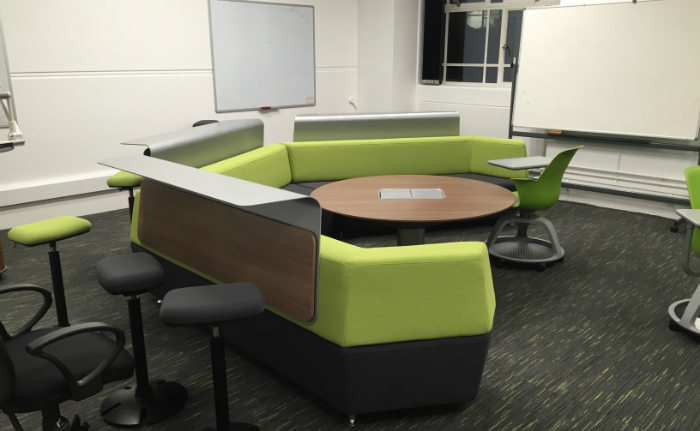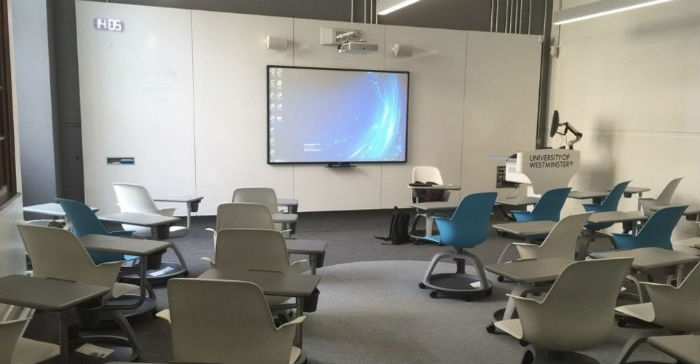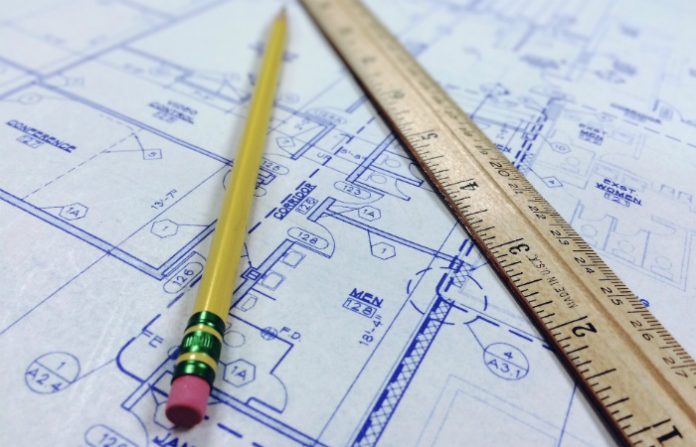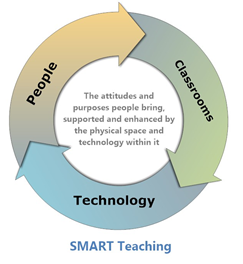As classrooms become more connected through students’ use of their own devices in lectures and seminars, universities are responding in exciting ways. Gunter Saunders and Federica Oradini describe how the University of Westminster is embracing these changes by transforming their classrooms.
Discussions about learning and teaching in higher education are buzzing with ways to engage students more in the learning process, seeking to work with them in a partnership to change the nature of the master-apprentice dynamic.
Alongside this, there is an increased focus in degree courses on the development of graduate skills critical for future employment. These ‘refreshed’ objectives for HE (they are not really new), together with changes in technology infrastructure at universities (and especially improvement in wifi and use of mobile devices), is enabling some major re-thinking about the ‘place’ of online stuff and the internet in classroom teaching.
With new classrooms coming on stream not just at Westminster but more widely across the sector, we hope that online learning can finally find a meaningful and embedded role in university teaching.
What we are seeking at Westminster is a shift from a predominantly ‘face to face + online’ model of curriculum delivery to a ‘face to face is online’ model as the internet becomes part of the physical classroom. Teachers have for some years, of course, been able to access the internet at the ‘front’ of a classroom via the networked computer, typically behind the safety of a lectern. However now of course students can easily access the internet in the classroom too, using their own devices. We want to exploit this in ways that help our lecturers spend less time being a ‘speaking lectern at a front of the class’.
To support our objectives, starting in 2015 the university embarked on a five-year programme to refurbish all classrooms to a new standard designed to facilitate what we are referring to as SMART teaching (see figure below).
Internally the programme is a response to a review of infrastructure for learning and teaching conducted in 2014 which showed that academic staff felt constrained by the physical spaces they taught in. Many inhibiting factors cited were quite basic such as lighting, availability of sufficient whiteboard space and room blackout capability. Classroom furniture was also considered to be too inflexible.
Current audio-visual / IT configurations in classrooms were not seen to encourage nor enable student engagement or involvement, tending to lead to perpetuation of a teacher-centric model of working. Changing this behaviour in a classroom can be supported and facilitated by classroom design, but the technology in the classroom must be easy for the teacher to use, in order that their confidence and mood and that of their audience remains high throughout a session. In addition, what is new is the availability of technology that goes beyond the normal set of teacher-centric tools and allows students to use the power in their own devices to be a part of the in-class action.

During the summer of 2015 a total of 25 general teaching spaces were completely modernised to address the issues identified during the infrastructure review referred to above. An external company advised on design during consultations with each faculty, to try to ensure that subject contexts were taken into account in the nature of the classroom spaces created. Based on the feedback received to date on the new classrooms, which has been both positive and constructive, a further 42 classrooms will be refurbished during the summer of 2016 in the second phase of the five-year programme.
Most academic staff are thrilled to bits when students actively participate in a classroom. If however the desired engagement does not materialise it can be very demotivating. Engagement follows enthusiasm and interest and fundamental in generating enthusiasm and interest is the real classroom ‘killer’ tool, the teacher.
Their passion and commitment to their subject lay the foundation for an effective classroom. To underpin what a good teacher can do, classrooms need to be spaces they can be confident in. They need easily accessed and usable ‘props’ that are helpful and reliable. This is particularly important when it comes to technology.

With new classrooms coming on stream not just at Westminster but more widely across the sector, we hope that online learning can finally find a meaningful and embedded role in university teaching. Whilst technology is not the only feature of our new classrooms at Westminster, its integration into the physical teaching spaces, in simple ways, provides new opportunities to better deliver what academic staff have always really sought – active, student centred learning.
Gunter Saunders is the director of internet and education technology services and Federica Oradini is a senior lecturer in eLearning at the University of Westminster.









